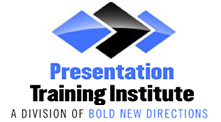What is Body Language?
Body language is the way in which you communicate without words. It includes facial expressions, hand gestures, and body movements that send messages of their own. The way in which you stand and carry yourself can tell others a lot about you. They can tell if you’re nervous and anxious or calm and confident. They can tell whether you are friendly and approachable or cold and hostile.Â
Why is Body Language Important in Presentations?
Your body language is all the more important when you are presenting and all eyes are on you. Bad habits like slouching, fidgeting with your hands, or failing to make eye contact can cause you to lose your connection with the audience. Therefore, you want to pay attention to your body language and learn how to use it in a way that reflects a positive message.Â
Body Language Tips for Better Presentations
Smile: A simple smile is one of the most powerful tools in your body language toolbox. It can instantly change someone’s perception about you, giving off a warm and friendly vibe.Â
Stand in a Power Pose: A power pose is a stance that can help you establish authority. An example would be to stand like a superhero, with your legs shoulder width apart and your hands on your hips. This powerful stance helps to display confidence.Â
Move Around the Stage: Move around the stage or even the room to engage your entire audience and command their attention. Step away from the podium and take a few steps. Then pause and take a few more steps. Be natural as you move about and avoid pacing. This is another display of confidence and it allows you to make eye contact with members of the audience in all areas of the room.Â
Eye Contact: As you speak, make it a point to establish eye contact with various members of the audience. This helps you connect with the audience and it makes your presentation feel more personal.Â
Use Hand Gestures: Great presenters often use hand gestures as part of their delivery. Hand gestures can help you stress what is important as well as your passion for the topic.Â
Avoid Nervous Habits: Oftentimes when we get nervous, we subconsciously do certain things with our bodies. We may put our hands in our packets, shuffle our feet, look down at our notes, or even cross our arms. All of these habits show that you are nervous and can distract from your presentation. Rehearse your presentation in front of a mirror or a mock audience and practice avoiding these common nervous habits.
